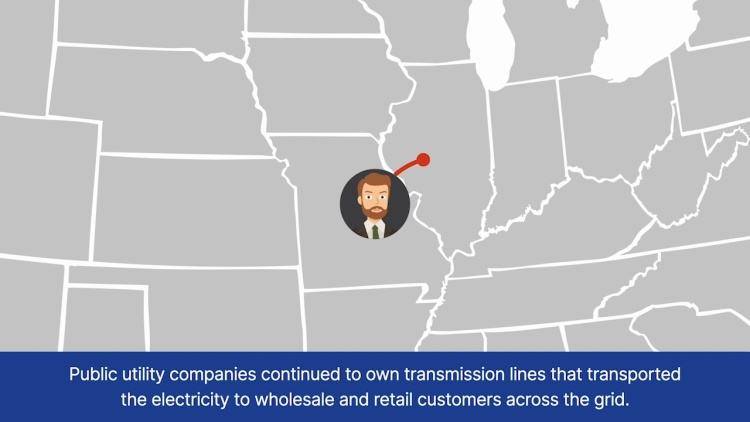New York v. Federal Energy Regulatory Commission
United States Supreme Court
535 U.S. 1 (2002)
- Written by Galina Abdel Aziz , JD
Facts
The Federal Power Act (FPA) was enacted in 1935. At the time, most utilities operated as separate, local monopolies subject to state and local regulations. The cost of electricity and the delivery were bundled into a single charge. Section 205 of the FPA authorized the Federal Power Commission’s (FPC) jurisdiction over the transmission of electric energy in interstate commerce and the sale of electric energy at wholesale in interstate commerce. The FPA prohibited unreasonable rates and undue discrimination and provided an avenue to correct unlawful practices. In the 1970s and 1980s, technology advances made it possible to generate electricity in efficient ways and the number of electricity suppliers increased. Electricity was delivered on three major grids—the Eastern Interconnect, the Western Interconnect, and the Texas Interconnect. Only Alaska, Hawaii, and Texas distributed electricity wholly within the state. Although the number of electricity suppliers increased, public utility companies retained ownership of the transmission lines that were necessary for competitors to deliver electricity to wholesale and retail customers. In 1995, the Federal Energy Regulatory Commission (FERC) (defendant) proposed a rule to require that a public utility company owning or controlling facilities used for transmission of electric energy in interstate commerce have tariffs providing for nondiscriminatory open-access transmission services. In 1996, FERC issued Order No. 888, finding that electric utility companies discriminated in violation of § 205 of the FPA. FERC ordered the unbundling of wholesale generation and transmission services, imposed an open-access requirement on unbundled retail transmission in interstate commerce, and rejected a proposal that the open-access requirement apply to the transmission of bundled retail sales.
Rule of Law
Issue
Holding and Reasoning (Stevens, J.)
What to do next…
Here's why 899,000 law students have relied on our case briefs:
- Written by law professors and practitioners, not other law students. 47,000 briefs, keyed to 994 casebooks. Top-notch customer support.
- The right amount of information, includes the facts, issues, rule of law, holding and reasoning, and any concurrences and dissents.
- Access in your classes, works on your mobile and tablet. Massive library of related video lessons and high quality multiple-choice questions.
- Easy to use, uniform format for every case brief. Written in plain English, not in legalese. Our briefs summarize and simplify; they don’t just repeat the court’s language.






